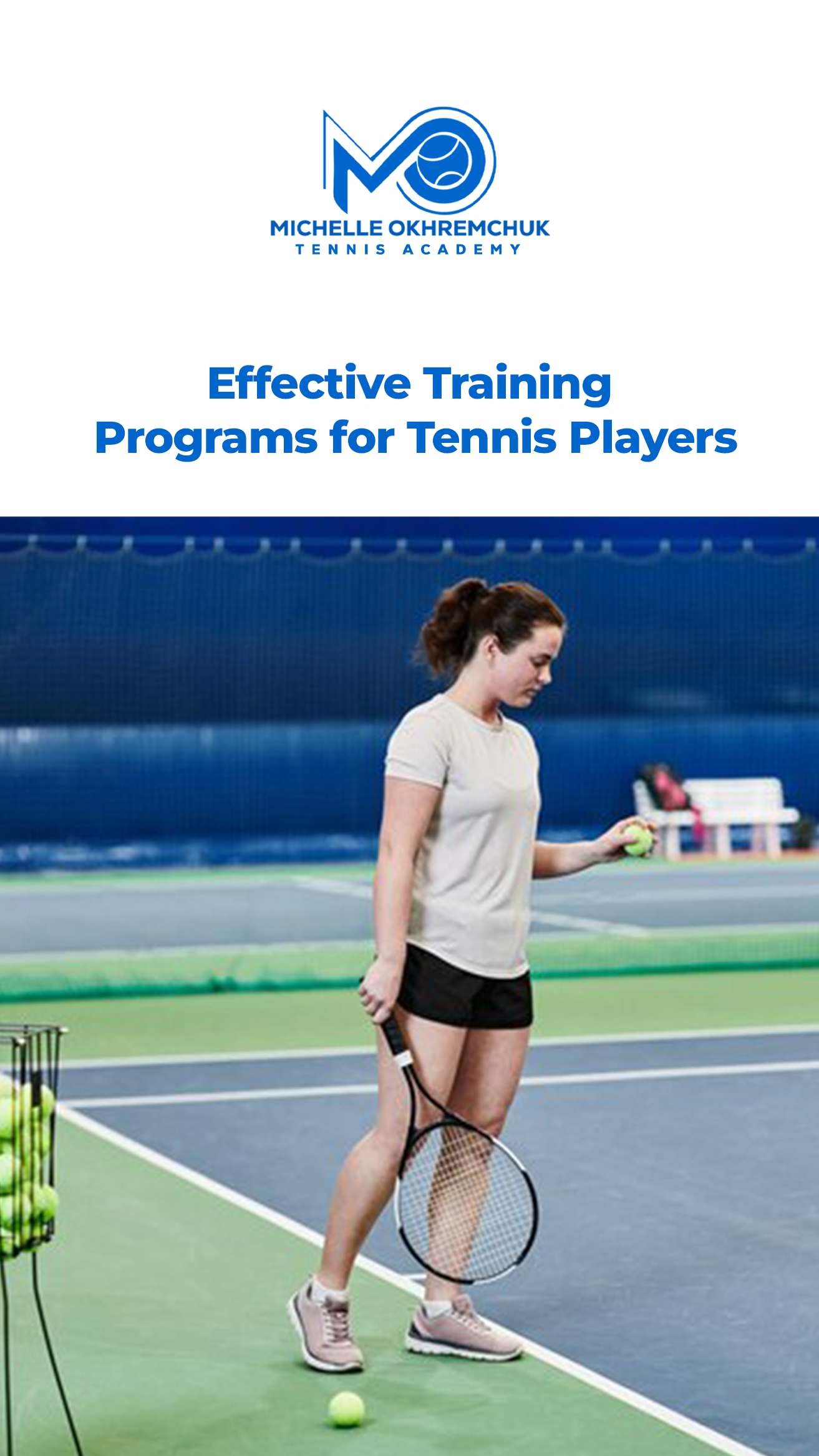Dominating the court requires more than just powerful swings and fancy footwork. To truly improve your tennis game, a strategic training program is the secret weapon. This guide discusses effective tennis workouts, providing insights and techniques used by top academies, Mo Tennis Training Academy.
We’ll unveil the power of dynamic warm-ups – a series of movements scientifically proven to optimize performance and minimize injury risk.
But preparation goes beyond warm-ups. We’ll explore the science behind strength training for tennis, dispelling myths about weightlifting hindering your finesse.
Discover how a targeted program can unlock a treasure trove of benefits:
- Explosive Power: Unleash devastating serves, forehands, and every shot in your arsenal.
- Court Domination: Increase your speed and agility, reaching balls with ease.
- Peak Performance: Enhance your muscular endurance, conquering those long rallies.
- Injury Prevention: Fortify your body, reducing the risk of overuse injuries.
Understanding the Demands of Tennis
To excel in tennis, it’s crucial to understand the sport’s unique demands. Tennis is a fast-paced game that requires explosive movements, quick reactions, and endurance to outlast your opponent. The dynamic nature of tennis means players must be agile on their feet, moving swiftly across the court to accurately return shots.
Tennis involves both physical and mental challenges. Players need strength, stamina, strategic thinking, and focus to anticipate their opponent’s next move. The combination of athleticism and strategy makes tennis a demanding yet rewarding sport that tests your physical abilities and mental fortitude.
Mastering the intricacies of tennis requires a holistic approach that considers all aspects of player development for optimal performance when competing at any level.
The Importance of Strength and Conditioning for Tennis Players
Strength and conditioning are essential components of a tennis player’s training regimen. Building strength helps players generate power in their shots, move swiftly across the court, and maintain stability during intense rallies. Conditioning enhances endurance, allowing players to sustain high-performance levels throughout long matches.
Incorporating exercises that target specific muscle groups used in tennis can improve overall agility and prevent injuries on the court. A well-rounded strength program should include legs, core, shoulders, and arms exercises to ensure balanced muscle development.
Focusing on functional movements that mimic actions performed during a match can enhance a player’s ability to execute strokes efficiently under pressure. By integrating strength and conditioning into their routine, tennis players can consistently improve their game and compete at their best level.
Essential Skills and Drills for Training
Footwork plays a key role in a player’s ability to move efficiently across the court. Agility ladder drills and cone exercises can help improve speed and agility on the tennis court.
Developing strong groundstrokes is essential for dominating rallies. Practice hitting forehands and backhands with precision and power through repetitive drills focusing on technique.
Serving with accuracy and power can give players a significant advantage during matches. Utilize serve placement drills and practice different types of serves regularly to keep opponents guessing.
Honing your volleys at the net is vital for finishing points quickly. Work on your touch at the net by practicing volleys from various angles using both forehand and backhand techniques.
Nutrition for Optimal Performance on the Court
Nutrition plays a crucial role in fueling the body and optimizing performance on the tennis court. For tennis players, focusing on a well-balanced diet that provides the necessary energy for endurance and agility during matches is essential.
Incorporating lean proteins like chicken, fish, and tofu can help repair muscle tissue and support overall strength. Complex carbohydrates such as whole grains, fruits, and vegetables are important for sustained energy levels throughout intense training sessions.
Hydration is key to maintaining peak performance on the court. Drinking adequate water before, during, and after matches helps prevent dehydration and supports optimal physical function.
Healthy fats like avocados, nuts, and olive oil can provide long-lasting energy reserves needed for extended play periods. It’s also important to avoid sugary snacks or processed foods that can lead to energy crashes during matches.
Mental Strategies for Success in Tennis
The mental aspect of tennis is often overlooked but plays a crucial role in a player’s success on the court. Maintaining focus, staying composed under pressure, and managing emotions are key components to performing at your best.
Visualization techniques can be powerful tools to enhance performance. By mentally rehearsing shots, strategies, and scenarios, players can cultivate confidence and improve their game.
Setting short-term and long-term goals helps players stay motivated and focused on continuous improvement. Breaking down larger objectives into smaller achievable steps creates a sense of accomplishment along the way.
Developing resilience is essential in tennis, as setbacks are inevitable. Learning from losses, adapting to challenges, and maintaining a positive attitude can lead to growth on the court.
Mindfulness practices such as deep breathing exercises or meditation can help players center themselves before matches, manage stress levels during competition, and boost mental clarity throughout intense rallies.
Recovery and Injury Prevention Techniques
Ensuring proper recovery and injury prevention techniques is crucial for tennis players looking to maintain peak performance on the court.
Recovery strategies such as adequate rest, hydration, and quality sleep allow the body to repair and rebuild after intense training sessions or matches. Incorporating active recovery activities like stretching, foam rolling, or yoga can also help reduce muscle soreness and improve flexibility.
Injury prevention techniques involve a combination of strength training exercises focused on stabilizing muscles around joints prone to injuries in tennis players. Paying attention to proper technique during practice sessions and matches can significantly reduce the risk of overuse injuries.
Regularly consulting with a sports physiotherapist or athletic trainer can provide valuable insights into individualized injury prevention programs tailored to specific needs. By prioritizing recovery and injury prevention, tennis players can enhance their longevity in the sport and minimize setbacks due to potential injuries.
Conclusion
Effective training programs are crucial for players to reach their full potential. By understanding the specific demands of tennis, focusing on strength and conditioning, honing essential skills and drills, optimizing nutrition, implementing mental strategies, and prioritizing recovery and injury prevention techniques, players can enhance their performance on the court.
With dedicated training efforts and the guidance of experienced coaches like Michelle Okhremchuk at Mo Tennis Training Academy in San Diego, tennis players can improve their game.
Remember that success in tennis is not just about natural talent but also hard work off the court.
So lace up your shoes, grab your racquet, and incorporate these training programs into your routine to take your game.


